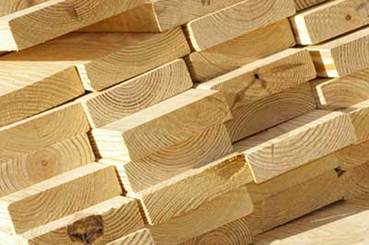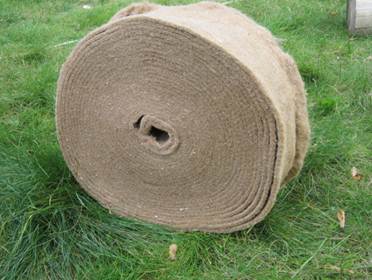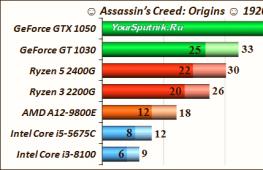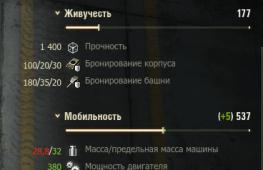What building materials are needed to build an energy efficient economical home. Wood-cement materials - types and purposes
There are several main products, which in turn consist of a combination of two main components: wood and cement. In modern construction, it is worth using materials that can immediately possess several functional characteristics such as:
- strength,
- durability,
- versatility in use and much more.
Therefore, various wood-cement-based materials have been developed, which are now increasingly used in construction. They gained popularity due to their low cost, which is combined with good quality materials.
Why do you need a combination of materials in construction?
Demand for similar construction Materials allowed to create a special enterprise engaged in their full-fledged production and further implementation. Basically, in order to create wood-cement boards, specialists in this field use certain technologies that can significantly speed up this process.
With their help, you can not only compress wood, forming boards into convenient blocks, but also combine several materials with each other. Slabs based not only on wood, but also on cement are better stored and are not subject to weathering.
In fact, wood itself is a fairly fragile material. And in combination with cement, it acquires new advantages necessary for full functioning. Thus, such plates have good strength and at the same time do not weigh too much. After all, building materials should be not only practical, but also versatile. Modern technologies make it possible to achieve positive results when creating wood-cement boards of various lengths and densities.
What are building materials for?
Since at the moment in the world the construction industry is developing and constantly improving, more and more new materials are being created that can complement any design project... Despite their strength, such slabs are often prematurely thin. This allows them to be used not only as the main building material, but also as insulation. Thus, it is possible to solve a fairly large number of urgent problems, related to:
- disposal of unnecessary waste from enterprises,
- development of secondary production,
- search alternative sources to obtain cheap and high-quality materials that can be used in the construction of modern houses and other types of premises.
When the production of building materials of this type is established correctly, it is possible to solve a number of problems associated with the subsequent rational use of wood processing waste. Particularly important is the issue of preserving the ecological health of the area where there are factories or enterprises that work with various building materials.
Depending on the type of wood used to create such slabs and the type of cement, various building materials can be obtained. They will differ from each other not only in functional characteristics, but also in the degree of compaction. Even the structure of such building boards will be different. Despite the fact that when creating the materials, almost the same constituent elements were used.
Types of building materials?
Depending on the constituent components that are involved in the creation of wood-cement boards, there are several building structures that are most common in the construction of all kinds of residential premises.
For example, fiberboard is a versatile material that has more than just sound insulation. If necessary, it can also be used as a sufficiently high-quality insulation. Thus, the same material performs several different functions at the same time. This is very convenient, especially if a person involved in construction wants to save their financial resources and at the same time build a quality house.
Often, fiberboard is used as the main material for walls. It is quite dense, but it has a rather elastic structure. It has several main advantages:
- the versatility of materials used to create slabs,
- acceptable cost yes,
- ease of operation and further use.
Chipboard is a different material with a high density. There it is mainly used as a faulty building material in various industrial buildings... It is preferred to asbestos-cement flat sheets, which significantly complicates the ventilation process in the room. This material is of good quality than plywood sheets. It has many more advantages, it is preferred even to plywood. Although if you compare these two materials, then there are practically no differences, except for a few constituent elements.
In all building extruded materials, there are some general technologies that contribute to their further creation, determine the field of application of such plates. All of the above materials differ not only in wood filler, but also in different surface structures. There are smooth wood-cement boards, as well as similar materials with a rougher or rougher surface. It all depends on where they will be used in the future.
All kinds of organic fillers based on cellulose structural elements, as well as the degree of compaction of the board itself, play a special role in the creation of boards. Most of all, such material as wood concrete is similar to fiberboard. In fact, similar building materials:
- are interchangeable,
- can be used for various construction purposes,
- does not require additional financial costs.
Experts know several techniques that allow improving not only the quality of all of the above materials, but also their ability to increase the degree of adhesion of the cement stone to the aggregate present in it.
In the process of creating new building materials, every detail is important. It is especially difficult to calculate the optimal shape of such slabs, as well as the size of wood particles required for full adhesion to cement, which are present in the finished structure.
If we consider the area in which such building materials can be used, then it is quite extensive. Often the most popular is the use of such plates in the construction of residential buildings and various industrial premises. Therefore, the materials are distinguished by good density, but also by sufficiently optimal conditions for their further storage. The main advantage that determines the choice when purchasing building boards is their low cost.
There is no longer a need to overpay too much money. All that is necessary for the organization of a full-fledged construction is contained in these simple and easy-to-use building materials.
At the moment, some types of building boards using certain modern technologies improve. Therefore, a number of additional advantages and opportunities do not appear. Fiberboard boards are mainly produced by well-known Austrian companies. These building materials contain the best traditions of foreign specialists.
Of course, the fiberboard plates that we produce differ in their quality. However, if you use their construction of houses, then there is practically no special difference between the materials of our and foreign manufacturers. Some distinctive characteristics are present only in the type of wood filler, which is the basis for the building board itself.
Dutch companies, as well as well-known manufacturers of wood-cement boards, use a unique technology in the pressing process, in which wood, which often has to be used in the form of shavings, forms the future building material thanks to a special wool. It is obtained after certain wood processing. Thus, it is possible to ensure the wetting of this material, its subsequent mixing with cement, in the proportions necessary to create a building board.
With the help of modern equipment, even the length and thickness of the plate itself can be adjusted. This is very convenient, because in some living quarters it is necessary to save free space while minimizing the thickness of the walls.
For comparison, at the beginning of the use of such technologies to create slabs, specialists used special devices that made it possible to manually adjust their length and thickness. Additional financial resources were spent on this, electricity and water were spent. Now this procedure can be simplified by using only a computer and all kinds of programs that are capable of performing several tasks at the same time. It all depends on the parameters entered into the system, as well as on the correct operation of the equipment.
Wood-cement boards come in several main varieties. These include cement-bonded particle boards. As the name implies, these are building materials, which are based on crushed chips pressed in a certain way or various wastes from the production of all kinds of goods from wood.
Chip-cement slabs represent a special group. They contain almost one hundred percent content of mineralized wood chips and cement, as the main fixer for the board itself. A separate group is cement fiberboard. It contains a special material that can later be used for thermal insulation. It is obtained in a certain way using the technology of creating slabs from special wood wool.
Building materials and the use of modern technologies can be created with minimal financial costs. However, the quality of such constituents present in wood-cement tiles will vary. In fact, it all depends on what kind of wood the manufacturer uses for subsequent work.
Foreign manufacturers differ from ours only in the use of various technologies for pressing boards. After all, such a building material is obtained from secondary raw materials. The importance of its further use is due to the development of waste-free production and methods of introducing similar programs at all plants and enterprises working with the production of goods from wood and cement.
Wooden construction is at the peak of its popularity today. And, this has been going on for quite a long time. The building material, called wood, is not going to concede its leading positions to others in the near future. This is due to the environmental friendliness of wooden buildings, economy, sufficient ease and speed of construction of a log house, durability of materials.
List of materials from which you can build a house
A wooden house can be made of the following materials:
- logs processed on grinding machines;
- perfectly flat, correctly shaped log that has passed the cylindering;
- timber untreated by additional methods;
- timber that has been processed on planing machines;
- timber made by gluing several layers of wood;
- logs processed from one or both sides - carriage.
Each of the listed materials has many advantages, and disadvantages are not excluded. The specific choice depends on the preferences of the owners and their material capabilities.

Details about wood materials
A perfectly flat wall surface, with a very tight connection of elements, can be obtained by using a rounded log for the construction of a log house. All elements are marked, grooves and channels are made in production, which greatly speeds up and simplifies assembly.
Excellent processing quality and the beauty of a flat log allow the owners of a new home to save on finishing materials - the structure already looks very attractive.

Antiseptics and paints for a wooden house

An important stage of construction is the treatment of crowns with antiseptic and other protective compounds. If it is not produced, then within a year the wooden building will be infected with wood-boring beetles, mold fungi, which will rapidly begin to reduce the strength of the wood and destroy it.
I consider Orion a proven, professional company. They have been on the market since 2006. The choice of domestic and foreign paints and varnishes, protective equipment is very large. You can also purchase other necessary products for wood: mastics, sealants, varnishes, bleaches, etc. But, you need to order the goods in their online store, and you will already need to receive the purchased products at the address: 360 Lunacharsky Street.
In modern building stores in Gelendzhik there is a large selection of materials, both at a high cost and more affordable (budget option) for building insulation, wooden material, paints and varnishes, facing materials, for facades, roofs, etc. I have never had to deal with a negligent attitude towards the buyer. Consultants will always inform and help you choose the most suitable material. There are good discounts for wholesale purchases and for a regular customer, which is undoubtedly pleasing.
If you build a wooden house in Moscow?
A good assortment of goods for wooden housing construction at an excellent price-quality ratio is worth looking at and choosing in the section"Products" our site of the "Winter House" group.
Thematic video about the products of the Winter House Group of Companies:
Choosing building materials for building an energy-efficient house
By and large, an energy efficient home should be like a thermos that practically does not cool down. Therefore, one of the most important design tasks for such houses is to limit heat loss along their perimeter: through the foundation, outer walls and roof.
By designing energy efficienthouse, you need to take into account that all external surfaces, that is, floor on a pound, walls and roof, must have a certain heat transfer coefficient (see table below). The "box", built from the right materials, significantly slows down cooling, which means it reduces heat loss. It remains to decide which materials are considered correct.
Underground surfaces
Energy efficient homes are not only about well insulated walls and roofs. They are also underground planes, that is, foundation walls, pound floor, or foundation slabs.
Relatively small structural elements of a house with a height of 50-150 cm are called foundation walls. Their dimensions depend on the number of floors, the height of the basement and the type of walls on the first floor. In energy efficient homes, the foundation walls are usually two or three layers.
The least costly system for organizing the foundation is considered to be the floor on the ground - it is most often arranged in energy-efficient houses. Ground flooring usually consists of the following layers: underlay, waterproofing, thermal insulation, underlay and flooring. Moreover, all layers that are laid on thermal insulation must be separated along the perimeter with special strips. This is especially true for underfloor heating.
Another effective and economical solution, especially in the case of difficult ground-water conditions (for example, on loose soils or areas with a high level of groundwater occurrence), is the construction of scrap on reinforced concrete slab... In energy efficient homes, a heated basement slab is preferred, which may not even be buried in the ground. This modern solution has many advantages, but the main thing is that it allows you to build a house with a high level of ground waves and on heterogeneous ground (see fig.).
For the construction of underground surfaces, solid, void-free materials are most suitable. Let's consider the most effective ones.
Concrete blocks measuring 12 x 25 x 38 cm and weighing 25 kg - an ideal foundation material. They are very durable, frost-resistant and absorb little moisture (5-9%). Moreover, they are relatively cheap.
Aerated concrete blocks
In domestic cottage construction they use aerated concrete blocks density 350-600 kg / m3. Usually the density of aerated concrete is chosen based on climatic zonewhere construction is planned. Single-layer walls made of this material are quite consistent with energy efficiency requirements. But there is also a more profitable option - ENERGO blocks with a density of 350 kg / m3 and with a standard resistance to heat transfer. The walls of them perfectly neutralize external temperature fluctuations and are characterized by a long cooling time. And these are the parameters that help to achieve the most comfortable and healthy atmosphere inside the house.
Hollow filling blocks allow making foundation walls 20, 25 and 30 cm thick. The holes in them are filled with ordinary concrete or expanded clay concrete. Walls made of this material have almost the same properties as walls made of solid concrete blocks. Additionally, you can use metal rods, which will increase the strength of the structure.
Solid ceramic bricks also suitable for building foundations. They are made of clinker (with an absorbency of 12%) or well-fired clay (with an absorbency of 20%). The bricks are small and lightweight, but take a long time to masonry and plaster before installing vertical waterproofing.
Advantages of clinker bricks.
Clinker brick has a denser structure than conventional facing brick. This significantly increases the frost resistance and durability of this building material, but at the same time increases the thermal conductivity coefficient. This property of clinker must be taken into account when calculating the thickness of the outer walls of the building - in order to achieve the energy efficiency of the house, the thermal insulation properties of these structures will have to be increased by adding an additional insulating layer. Accordingly, construction costs will also increase - up to about 5%, excluding the difference in the cost of bricks. But in return you get a durable, sophisticated and prestigious facade that will favorably emphasize the beauty of your home, will last a long time and will not require regular spending of time and money for repairs.
Monolithic concrete - a guarantee of durability at a low price. The properties of concrete make it possible to make both walls and foundation slabs strong, frost-resistant, practically non-absorbent and cheap. The disadvantage is the need for formwork.
For waterproofing the foundation, use liquid bituminous mastics (creating durable, flexible, resistant to many chemicals and UV radiation coatings) and waterproofing films made of PVC or polyethylene with a thickness of 0.6-2 mm, which can be glued to the base or mechanically fixed at any time of the year, regardless of the weather.
Thermal insulating materials for surfaces in contact with the ground must be resistant to moisture and mechanical damage.
Exported polystyrene foam - the best solution for insulating walls, foundation slabs and floors on the ground. This material has good heat-insulating, water-repellent and strength characteristics. Have expanded polystyrene the quality is slightly worse, but it is cheaper. Slabs with a specific gravity of at least 20 kg / m3 are suitable for insulating foundation walls.
Exterior walls
Quality visible parts the building is just as important as the quality of the foundation. From the appearance and technical characteristics walls, roofs, windows and doors depend on both the attractiveness of the building and its energy efficiency. Let's consider the highest quality technical solutions for external enclosing structures. Three-layer walls are one of the best structures, each layer of which performs a specific function (see fig.). A load-bearing wall with a thickness of 18-20 cm can be made from hollow ceramic blocks, lime-sand bricks and other materials. An insulating layer of expanded polystyrene or hard mineral wool, 15-20 cm thick, guarantees good thermal insulation of the wall and excludes cold bridges. And a protective layer 8-12 cm thick made of clinker bricks, lime-sand, concrete or ceramic blocks (often plastered) guarantees attractive view buildings, long service and additional soundproofing.
Double-layer walls thinner than three-layer. They are less durable and more susceptible to mechanical damage. External load-bearing walls with a thickness of 24-29 cm are made of the same materials as three-layer ones. Expanded polystyrene is used as thermal insulation, less often mineral wool. Most often, the layer of insulation is protected with a fiberglass mesh and thin plaster.
Single layer walls with an appropriate thermal insulation layer - perhaps the best solution for energy efficient homes. But only on condition that they were erected from ceramic hollow blocks, the voids in which were filled with foam chips. For walls 31-36 cm thick, the coefficient of resistance to heat transfer is 0.19 W / (m2 - ° С). The thickened inner layer of expanded clay concrete improves heat accumulation and gives the wall additional strength.
Wall requirements in an economical, energy efficient home
It is imperative to ensure that the thermal properties of the ceramic block wall masonry meet the requirements of building codes. So, for example, for the temperature zone of our country, covering all northern and central regions, the heat transfer resistance of the walls is 2.8 m2 - ° C / W.
The laying of walls made of Porotherm 38 P + W blocks on a heat-saving mortar meets the requirements of the above DBN in the I temperature zone, and therefore the requirements of other, less severe temperature zones. The thickness of such a wall, excluding the plaster layers, is 38 cm. The wall erected from Porotherm 44 and 50 P + W blocks (44 and 50 cm thick, respectively) will have a margin of thermal insulation capacity.
Roofs
The roof is one of the most important elements of the house. Special requirements are imposed on the roofs of exploited attics (attics). When constructing them, all the conditions for heat and sound insulation must be observed. In addition, the roof structure must be light, and this can only be achieved thanks to a multi-layer roof covering can be made of almost any available materials (metal, ceramic or bituminous tiles, sheet metal, reeds, etc.). It all depends on the architect and the owner. But the main thing is that the coating is airtight and durable.
Frame roofs are chosen taking into account the type of coverage. A solid frame made of OSB boards or boards is required when roofing with bitumen or metal sheets. When covering with tiles (ceramic or metal), a wooden crate is stuffed onto the rafter system. Rafter system usually made from beams. Traditional design options are adapted to the small size of the houses and the slight angle of inclination of the slopes.
Wind isolation is a film with a high vapor permeability required in houses with a residential attic. It protects the mineral wool layer from rain and snow, which can penetrate the coating, and at the same time allows the moisture that accumulates in the thermal insulation layer to evaporate.
thermal insulation is most often made of mineral wool and laid in two or three layers. In energy efficient houses, the thickness of the insulation should be 20-25 cm (at least 8 cm in a single layer). Mineral wool not only reliably protects the room under the roof from heat loss, but also acts as a sound insulator, does not burn, is characterized by sufficient elasticity and can be easily fitted between the rafters. However, we must remember that it is afraid of moisture, therefore, vapor barrier is required for the roofing cake. It is a film made of polyethylene or other material that allows steam to pass through and does not allow moisture to accumulate in the insulation. As an internal cladding, you can use wooden lining, plasterboard sheets, etc.
New floor structures
Precast monolithic interfloor floors (for example Teriva) are much warmer and lighter than traditional structures. They make it possible to use a lightweight foundation and modern, lighter and cheaper wall materials. In terms of speed, 100 m2 of floor slabs are manually assembled by 4 workers in 2-3 days. These designs do not require additional costs for various types of insulation, since they have high thermal conductivity and noise absorption. In addition, they are economical in finishing: a layer of concrete is enough from above, from which the finishing screed is immediately made for the floor, and from below is a perfectly flat ceiling surface, on which it is enough to apply a thin layer of plaster (2-3 mm). All these factors make overlapping a practical and financially profitable building material, with which savings of the order of 10-30% can be achieved.
Basic requirements for building structures and materials for their manufacture
Thermal insulation - the main parameter that directly affects the cost of home maintenance. This is because walls and roofs transmit about 30-55% of the heat used for heating, and windows and doors about 15-25%. It is not surprising that experts recommend using 15-25 cm thick mineral wool or expanded polystyrene thermal insulation.
Soundproofing affects comfort, it is especially important in places with high noise levels. Good sound insulation is provided by concrete, ceramic bricks, mineral wool and other materials.
Accumulation heat eliminates temperature fluctuations in the room and saves heat energy. This characteristic is mandatory for energy efficient homes. It is possessed by heavy materials: stone, concrete, clinker and lime-sand bricks.
Comparative characteristics of the external surfaces of houses
SURFACE TYPE | HEAT TRANSFER COEFFICIENT VALUE, W / (m2 - ° С) |
|
APPROPRIATE HOUSE | ENERGY EFFICIENT HOUSE |
|
Exterior walls | 0,30 | 0,15-0,20 |
Window | 0.80-1 |
|
External doors | 2,60 | 0,80-1 |
Roof | 0,30 | 0.15-0,20 |
Paul on the pound | 0,60 | 0,15-0,20 |
Overlap over the basement | 0,60 | 0,20-0,30 |
Some details that are important to consider when building a new energy-efficient home.
- The price of the roof is about 10-15% of the cost of the box at home. The correct choice of coverage and professional installation can reduce heat loss during building operation by 20-30%.
- Sealed windows with double-glazed windows increase the heat and sound insulation of openings by 3-4 times compared
- with old wooden joinery.
- Wooden houses take about a year to shrink. Only after this time you can start finishing work.
- Walls built from ceramic blocks have such high thermal insulation characteristics that they do not need
- in insulation.
Advice: Combining materials
Replacement of one material provided in the project with another one chosen by the customer is possible under certain conditions. As a rule, the permissible replacement of wall materials concerns those cases when it comes to elements with similar dimensions (in particular, width) and technical parameters. If you want to replace materials of different parameters and properties.
For example, hollow ceramic blocks for aerated concrete blocks, it is necessary to consult with the designer and obtain written permission. This is due to the fact that such a replacement may require adjustments to some technical solutions. Such technical changes can only be made by a designer or specialist with the appropriate rights.
In most cases, the use of different wall materials in one structure - for example, aerated concrete on the first floor, but bricks on the second - will inevitably lead to the formation of cracks on the wall due to the difference in thermal insulation parameters and compressive strength of the two materials.
If you do NOT build with your own hands: construction quality control
In order for an ordinary consumer to understand how well the house that he is going to purchase is insulated, it is necessary to first study the project, understand the structures of the enclosing walls, roofs, ceilings, etc.
As a rule, wall structures are multi-layered - for example, plaster + insulation + brickwork, ventilation facade + insulation + monolithic concrete, frame wall with cladding and insulator, etc. In each case, it is necessary to calculate the entire "pie" of the structure and check the obtained values \u200b\u200bfor compliance with the standards.
For example, in Europe, and throughout the world, there is a building label that automatically shows the energy efficiency class and affects the cost of selling or renting a given property. In our country, there are also energy labels and energy certificates of buildings, however, unfortunately, especially in private housing construction, these norms and requirements are not met.



